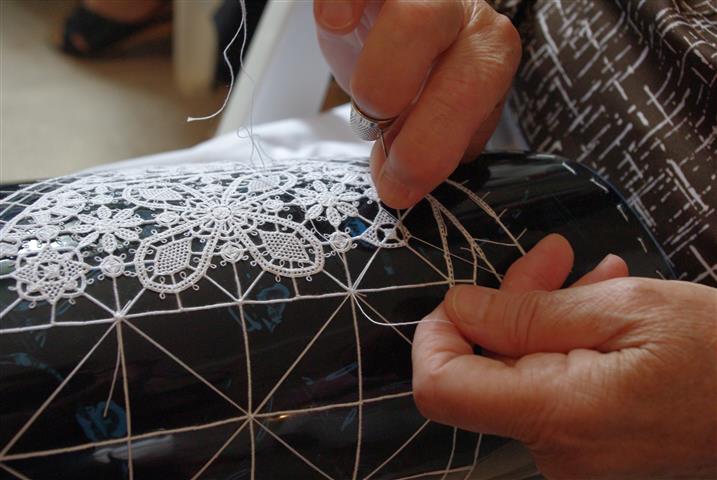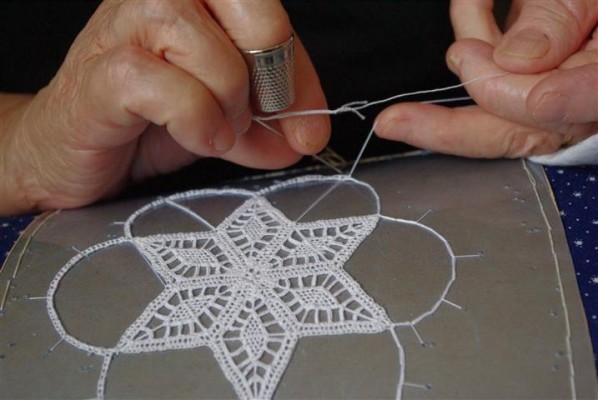The lace of Pag, known and valued far and wide, is by the skilled and hard-working hands of women from the town of Pag. The hands that create this splendour of interwoven threads are the hands of mothers and grandmothers who have always carefully washed them to eliminate any chance of soiling the lace, hands which for many trying years served as financial support to families and children who had to leave the town to further their education. Today there isn’t a family in Pag that does not have framed lace on the walls of their homes, which they proudly show to every guest, and which they also assiduously safeguard to preserve it so that it may be inherited by their children and grandchildren. The beginnings of the story of lace in the town of Pag may possibly be found in the lunette of the parish church, which depicts the people of Pag under the protection of their patron, the Madonna, in shallow relief. The work of a 15th century sculptor (attributed to Petar Berčić, an associate of Juraj Dalmatinac) presents a stylized portrayal of attire, on which the woman’s headdress stands out in particular.They cover their heads with thin linen kerchiefs (called pokrivaca), trimmed with lace at the ends, and tied in a specific manner. The breast of the woman’s white linen blouse and the headdress were adorned with exquisite lace called teg (meaning women’s handicraft). The Pag teg is a combination of techniques involving stitching and the initial reticella engraved on a linen base with geometric decorative motifs. Pag lace was woven in the convent of the Benedictine sisters, where the nuns taught their wards and young girls from the town how to make lace. The collection which the Benedictine sisters of Pag have collected and maintained for over 150 years was proclaimed a cultural treasure of Croatia by the Croatian Ministry of Culture.
After the establishment of the lace-making school in 1906, lace became a decorative element on its own – “Pag lace,” an adornment on clerical vestments, tablecloths, handkerchiefs and clothing. The school was established by Pag’s mayor at the time, Frane Budak, and the first instructor was Nilla Rakamarić, who trained in Vienna. During this time, Pag lace was present at many arts and craft exhibitions from Vienna to Paris, London and New York, often receiving awards.The lace school operated continually until World War II, and with longer or shorter interruptions thereafter. It began to function as part of the Bartul Kašić Secondary School in 1994. Besides the school, the Frane Budak Association of Lace Makers also plays a vital role in the preservation of Pag lace. The requirements for making Pag lace are a small semi-circular pillow with hard filling, a drawn pattern, a needle, white thread and steady and always clean hands. The tradition of stitching was maintained by Pag’s women by making adornments for their traditional clothing, and later unique decorative items. Another particular feature of Pag lace is that before there were no recorded patterns for making it, rather the patterns and methods were handed down from generation to generation via oral tradition and practical work. Since 2009, the craft of lace-making in Pag, Lepoglava and Hvar has been recorded on UNESCO’s Intangible Cultural Heritage List.

















